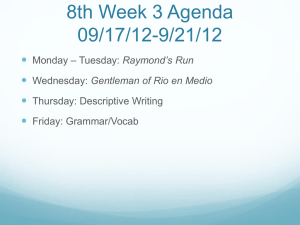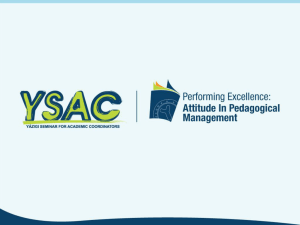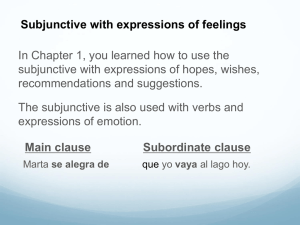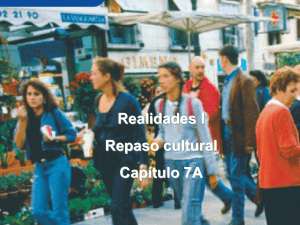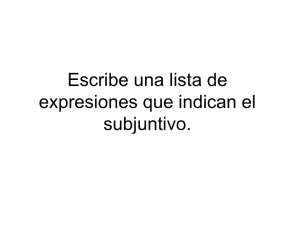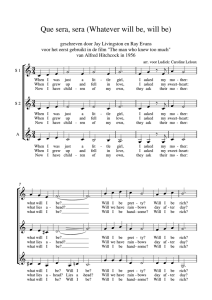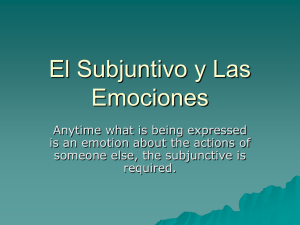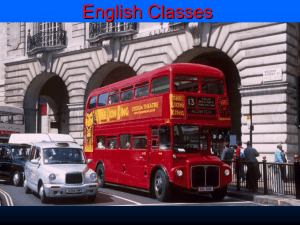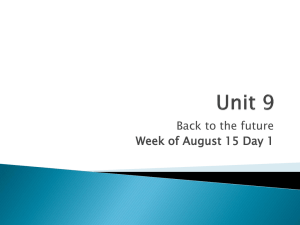presentacionreciclaje
advertisement
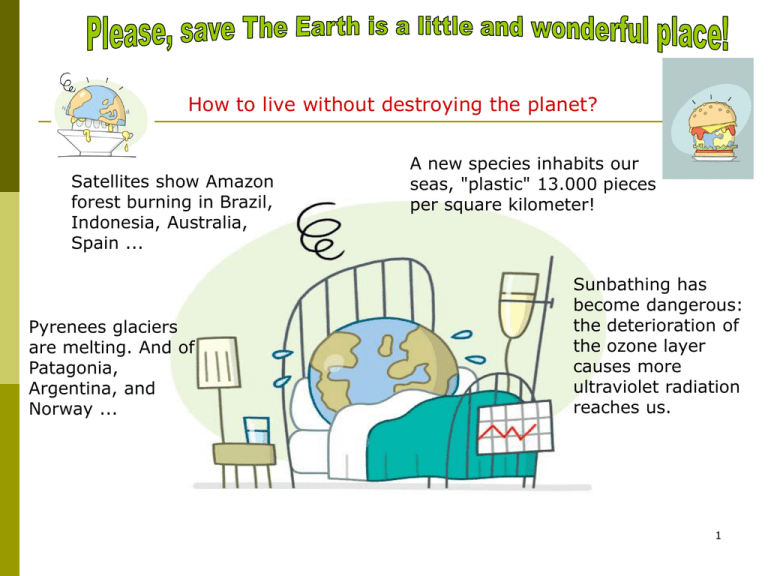
How to live without destroying the planet? Satellites show Amazon forest burning in Brazil, Indonesia, Australia, Spain ... Pyrenees glaciers are melting. And of Patagonia, Argentina, and Norway ... A new species inhabits our seas, "plastic" 13.000 pieces per square kilometer! Sunbathing has become dangerous: the deterioration of the ozone layer causes more ultraviolet radiation reaches us. 1 Why is it important to recycle and save natural resources? Recycling is one of the best things that you can do for the environment. While reducing piles of garbage, you're also protecting natural resources, cutting global warming pollution and saving water and energy. Make recycling a family affair. It’s easier to get people involved if they know what they’re supposed to do. The goal is to help make recycling so easy and automatic that it blends into the flow of everyday life. Anselmo Prados 2 The strategy of the 3 R's One of the keys to reducing the amount of waste generated is to apply this simple rule, which corresponds to the initials of "Reduce", "Reuse" and "Recycle", which established in this order at the time of managing waste. should The rate of waste generation amounts at the city of Madrid to 1.5 kg per capita per day, representing a quantity of waste difficult to imagine. Children must to learn why it is important to treat natural resources and waste with care. Anselmo Prados 3 There are many possible ways to reduce the amount and hazard of the waste generate. Here are some tips: -Whenever possible buy products in bulk or largepackages. Avoid individual products and flee from the disposable items (plates, cutlery, napkin ...). - Avoid the use of dangerous products or replace them with less harmful (batteries rechargeable, vegetable-based or water inks, organic cleaners, etc). Anselmo Prados 4 -Do not use disposable products, choose other more durable (handkerchiefs, cutlery, glass dishes, shopping carts ...). If you have to buy them give several applications: fill the bottle, wash the cutlery and plates, reuse shopping bags, etc. -You can give new functions to objects that would normally strip them away. For example: Use clothes that you can not donate as rags. Take glass jars to package other products. Use the shopping bags for trash instead of buying other bags for it, etc. -Donate or delivering anything that can still be helpful to someone else. There are associations that collect clothing, computers, furniture, toys, books ... and are responsible for making them available to people who Anselmo Prados 5 need them. Although the recycling of most materials needed for processes that can not be done at home, some products can be recycled at home: - Soap from vegetable oil. Recycled paper. Composting: technology for recycling organic waste. Crafts and other creative ideas. But the most important thing is Anselmo Prados 6 What waste is in the yellow container? • Plastic Packaging : Milk bottles, juice, yogurt, soft drinks, water, home cleaning products or of personal cleanliness (gel, shampoo, cologne, cream, etc.). Butter or cream tubs, cups of yogurt, pudding or other desserts. Shopping bags, packaged goods such as muffins, bread, chips, nuts, etc.. Polystyrene trays (Styrofoam), plastic film and plastic wraps (the film which came with trays of meats, fruits, vegetables and fish, which involves a lot of magazines, pamphlets, press ...) Large plastic wrap and mattress covers or furniture. Glasses, dishes or plastic covered single-use. Packages of meat products. • metal containers(Steel and aluminium): Cans, tins. Aluminum plates and trays (such as catering) Foil,bags of chips, etc. Lids and caps of bottle or jars. Aerosols • Packaging type brik: Briks of milk, tomatoes, wine, oil, soups ... Anselmo Prados 7 It is important to note that in the yellow bin deposited only plastics that are part of a package (along with cans and briks). If you want to recycle other plastic products and materials, such as a toy or a plastic chair, you should take them to the clean Points. Anselmo Prados 8 What waste is in the green container? Glass container. Bottles, cans and glass jars. Remove lids, caps, corks, paper labels. Rinse bottles before placing in the container. Glass bottles must not be mixed with other types of glass such as windows, light bulbs, mirrors, glass tableware or auto glass. Ceramics contaminate glass and are difficult to sort out. Anselmo Prados 9 What waste is in the blue container? Paper and cardboard container. Newspapers, magazines, catalogs, letters, cardboard packaging, egg boxes, etc. What is he doing? Do not throw dirty paper or plastic bags. Folding cartons. Anselmo Prados 10 Single Use Batteries (Alkaline, Heavy Duty) Every supermarket and in other places, there are collection bins for batteries. Keep out of the environment; take to an security dealer for recycling. Anselmo Prados 11 Chemist`s. Sigre Point Medicine, drugs. Do not throw in any other container. Chemicals must never be dumped in storm drains. Anselmo Prados 12 Container of organic matter and debris. Organic matter (food waste). Paper and dirt. Diapers. Place in sealed bags to avoid contaminating the containers. Anselmo Prados 13 Garbage company or local recycling agency. (Punto Limpio) Some of the waste will require special handling procedures and special recycling places or events. Chemicals or used oil, must never be dumped in storm drains. Anselmo Prados 14 Some of the waste will require special handling procedures and special recycling places or events. Items such as poisons, paints, oil, solvents, automotive fluids, cleaners, herbicides and many others. Motor Oil, Tires and Car Batteries Fluorescent light bulbs, Mercury Thermostats & Thermometers, Mercury Switches. Unwanted Household Goods (small appliances, tableware, clothing, furniture, toys, sports equipment, children's books, etc.) Anselmo Prados 15 The distribution or location of the clean points in our country (fixed and / or mobile), depending on the Community, municipality or district where you live or are interested to deposit waste. It is therefore advisable to call your city or municipal board before turning to it to know the characteristics and hours of clean point. Anselmo Prados 16 20% of men consume more than 80% of the earth's resources. 5,000 people die every day from unsafe water. One thousand million people lack access to clean water. One thousand million people are hungry. Over 50% of the grain market in the world are used as animal food and agrofuels. 40% of the arable land is degraded. 13 million hectares of forest disappear annually. One in four mammals, one in eight birds, one amphibian in three is in danger of extinction. Species are becoming extinct at rates 1,000 times the natural rate. Three quarters of fish stocks are depleted, in decline or on the verge of becoming so. The average temperature in the last 15 years has been the highest ever recorded. The ice (ice bank or the polar regions) has lost 40% of its thickness in 40 years. There could be 200 million climate refugees by 2050. Global military spending is 12 times higher than development aid. Anselmo Prados 17 What can citizens do to protect the environment? We all know what to do, but sometimes we forget. Anselmo Prados 18 Anselmo Prados 19 Don't throw away anything that can be recycled! Here is a list of things you should always recycle (or reuse!) ... Where do you put away in Madrid? Acid Batteries Aluminum Cans Building Materials Cardboard Chemicals Electronic equipment Glass (particularly bottles and jars) Lead Magazines Metal Newspaper Anselmo Prados Oil Paint Paper Plastic Bags Plastic Bottles Steel Cans Tires White Goods(Appliances) Wood Writing/Copy Paper Yard Waste 20 Do you know really, what is the meaning of these symbols? Anselmo Prados 21 What do you think about that image? Anselmo Prados 22 TESTS SOBRE LOS RESIDUOS Y SU RECICLAJE ¿ VERDAD O MENTIRA? Indica si las siguientes afirmaciones son verdaderas (V) o falsas (F) 1. Los residuos no tienen ningún valor, por lo que siempre deben ir al vertedero. 2. Las latas, envases de plástico y briks deben ir al contenedor amarillo. 3. Un juguete de plástico roto debe depositarse en el contenedor amarillo. 4. El contenedor verde es sólo para envases de vidrio. 5. El compost es un fertilizante natural usado para abonar el campo. 6. Las servilletas usadas de papel deben ir al contenedor azul de papel y cartón. 7. Las cajas de cartón y los periódicos se depositan en contenedores distintos. 8. A los vertederos debería llegar sólo lo que no pueda reciclarse o reutilizarse. 9. El papel manchado de grasa no debe echarse al contenedor de papel y cartón. 10. Los vasos y platos rotos deben ir al iglú verde para vidrio. Anselmo Prados 23 SOLUCIÓN AL TEST : ¿VERDAD O MENTIRA? 1. Falso Muchos residuos tienen aún valor, al poder ser reutilizados o reciclados, por lo que siempre que sea posible debemos evitar que vayan al vertedero. 2. Verdadero En el contenedor amarillo deben depositarse estos residuos. ¡Recuerda!: envases de plástico, latas y briks. 3. Falso Un juguete no es un envase, por lo que nunca deberá depositarse en el contenedor amarillo. Deberás depositarlo en el contenedor de resto. 4. Verdadero Recuerda que no debes depositar en este contenedor nada que no sean envases de vidrio. ¡Nunca deposites cristales de vasos, platos o ventanas rotas! 5. Verdadero Si reciclas la materia orgánica convirtiéndola en compost, podrás usarla como abono natural para tus plantas. 6. Falso El papel tisú no es reciclable, por lo que debes depositarlo en el contenedor de resto. 7. Falso El papel y el cartón deben ir al contenedor azul, así que tanto cajas de cartón como periódicos se deben depositar en este contenedor. 8. Verdadero Debemos reducir la cantidad de residuos y evitar que lo que aún puede ser útil o reciclable vaya a los vertederos. No olvides aplicar la regla de las 3’R! (Reduce, Reutiliza, Recicla) 9. Verdadero Recuerda que si el papel está manchado de grasa no se puede Anselmo Prados 24 reciclar. 10. Falso. El iglú verde es sólo para envases de vidrio. TEST SOBRE HÁBITOS DE RECICLAJE ¿ Eres responsable en tu comportamiento ante los residuos? Demuestra lo que sabes sobre el reciclaje. Descubre en qué grupo te encuentras en las soluciones... 1. ¿Qué residuos se deben depositar en el contenedor amarillo? A) Papel y cartón B) Restos orgánicos C) Envases de plástico, latas y briks 2. ¿Separas los distintos tipos de residuos en tu casa? A) Sólo separo el papel y el cartón del resto de residuos B) Separo el papel y cartón, los envases, y el vidrio del resto de residuos C) Separo el papel y el cartón y los envases del resto de residuos 3. Si tuvieras que elegir, ¿qué tipo de producto comprarías? A) Uno con poco embalaje, o en el caso de algunos alimentos, comprarlos al peso en lugar de envasados. B) El que tenga más envases, ya que así estará más fresco y protegido C) El que más me guste, sin tener en cuenta el envase. 4. Cuando hacéis la compra en casa, que hacéis con las bolsas de plástico? A) Las tiráis a la basura directamente B) Las reutilizáis varias veces para ir a comprar y cuando se deterioran demasiado las depositáis en el cubo amarillo C) Las usamos como bolsas de basura en lugar de comprar bolsas para ello. 5. ¿ Has fabricado alguna vez algo con residuos? A) No, nunca. ¿Para qué, pudiendo comprarlo? B) Si, y reutilizo muchas cosas Anselmo Prados C) No, pero se me ocurren bastantes ideas 25 SOLUCIÓN AL TEST SOBRE HÁBITOS DEL RECICLAJE SUMA TU PUNTUACIÓN: 1. A) 2 B) 2 C) 6 2. A) 2 B) 6 C) 4 3. A) 6 B) 2 C) 4 4. A) 2 B) 6 C) 4 5. A) 2 B) 6 C) 2 - De 0 a 12 puntos En tus actividades cotidianas no tienes en cuenta el problema que supone la gran generación de basura. ¡Tienes que pensar más en el medio ambiente y mejorar tu comportamiento ante los residuos! - De 13 a 22 puntos: Haces bien algunas cosas pero tienes que mejorar en otras. ¡Vas por buen camino! - De 22 a 30 puntos: Estás concienciado/a ante la necesidad de la correcta separación de los residuos y conoces perfectamente cómo realizarla. ¡Sigue aplicando la regla de las 3 R’s: Reducir, Reutilizar, Reciclar! Enhorabuena! Anselmo Prados 26
